Hypersomnia Definition and Types
Hypersomnia is an enfeebling neurological disease that causes people to sleep enormously, yet still be zealous for more rest. This illness ruins carrier, life and family relations. The symptoms appear at puberal growth stage, but it often takes a decade for new patients to be diagnosed.
The ailment holds many secrets, though many facts are evident.
What Is Hypersomnia (Excessive Sleepiness)?
Hypersomnia (hypersomnolence) is defined as a state of excessive sleepiness (more than 10 hours in a day) or incapacity to feel refection that sleep normally imparts. Chronic patients sleep up to 18 hours but they still feel fatigue after waking up. Disorder has been developing sluggish over a long period. It may be accompanied by mental disorders like ADD.
Hypersomniacs may catch forty winks several times during the day if they feel tiredness. Other concomitant symptoms are:
- disturbance;
- impatience;
- lack of energy;
- excitation;
- heavy mind;
- delayed speech;
- anorexia;
- pseudesthesia;
- poor memory;
- sluggishness.
The symptoms may be severe enough and affect sufferer’s carrier, social and family life.

Epworth Sleepiness Scale
The Epworth Sleepiness Scale is meant to be used to measure rates of day sleep. Index 18 and more means that an enrolled is very sleepy. 10-18 implies observed sleep. Improving sleep regimen and visiting somnologist is highly suggested. The scale results should be discussed with a personal medical adviser.
Estimation should be done by totaling the numbers which suit most to usual habits:
- 0 = never sleep;
- 1 = small chance to nap;
- 2 = average possibility to rest;
- 3 = high expectations to fall asleep.
The Test:
|
Surrounding and types of activity |
Probability to fall asleep |
|
Book reading |
– |
|
TV Viewing |
– |
|
City places of rest |
– |
|
Being a passenger in a car an hour and more |
– |
|
Daytime rest |
– |
|
Chatting to anyone |
– |
|
Quietness after meals without alcohol |
– |
|
While driving in traffic jam |
– |
|
Scoring |
Epworth Sleepiness Scale level |
Hypersomnia Types
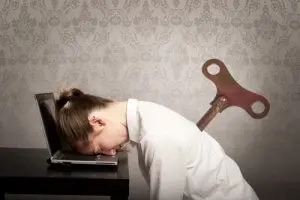
- Primary hypersomnia (idiopathic hypersomnia) is quite rare. Patient may sleep well at night, but in daytime deadly tiredness is re-asserting itself. Idiopathic hypersomnia sufferers sleep 10-21 hours daily and such regime lasts years along. Patient is:
- uncontrollable;
- bad-tempered;
- furious;
- falls back and sleeps again;
- suffers from headache and lack of concentration;
- climbs the walls;
- behaves inadequately.
The symptoms last up to 4 hours from waking up in the morning or after a nap and are named «sleep drunkenness». After that a sick one succumbs to the intense sleeping over again. Narcolepsy, Kleine-Levin syndrome are in the list of idiopathic hypersomnia diseases. The reason of most ones is unbeaten, the illnesses require further researches. Primary hypersomnia in sign of diabetes is rarely reported.
- Secondary hypersomnia is a concomitant sign of other diseases. Patients may feel constant sleepiness in acute stadium, though later the symptoms may change. They often live a usual life, even suffer from insomnia sometimes. The conditions which cause secondary hypersomnia are commonly connected with following illnesses:
- kidney;
- liver;
- blood-vascular;
- hormonal;
- neurologic;
- metabolical;
- psychologic;
- encephalomeningitis.
This type of hypersomnia does not require medical treatment unlike the symptoms of primary hypersomnolence. It goes away by itself.
Chronic Form
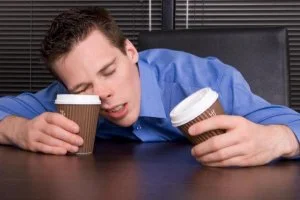
- narcolepsy with sudden loss of muscle tone or without it;
- primary hypersomnolence (constant);
- recurrent primary hypersomnia (with protracted sleeping periods up to several days which relapse once a year or more);
- ISS (behaviorally-induced insufficient sleep syndrome);
- secondary hypersomnolence;
- hypersomnia called by drugs usage;
- SDB (sleep disordered breathing);
- periodic limb moving movement disorders;
- other unknown physiologic states.
The etiology is significant for diagnosing and clarifying the syndromes. Chronic form is defined on base of detailed clinical review, the Epworth Sleepiness Scale, polysomnography and sleep latency tests.
Primary Type
Fairly often people live with primary type of hypersomnia without realizing it. Its main symptom is a sleepy feeling all day along. A sufferer is exhausted even after a nap, awakening in the morning is problematic.
Clear reasons of its appearing are still unknown. Recent elaborations suggested that the sickness starts in brain cells which regulate sleep and vigil. IH sufferers are young people up to 30 y.o. The disease has been accumulating during years, manifesting itself in non-ability to work, family conflicts, impossibility to drive a vehicle without specific medication.
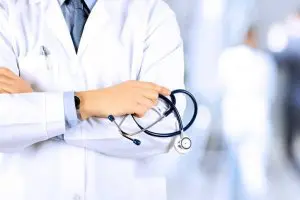
By today there is no special cure but expectant treatment. In 10-15% cases primary hypersomnolence resolves itself. The systems in the brain are being learned and possibly scientists will be ready to represent a new drug developed for IH.
In case of IH diagnosing, the life style must be corrected, particularly biological clock. Much depends on patient and support of his relatives.
Acute Sleepiness
Acute Sleepiness is an explosive onset of exaggerated sleeping feeling. Bouts of extreme drowsiness might be caused by different illnesses. The most frequent cases are represented in the table.
|
Disease |
Manifestation |
|
Human African Trypanosomiasis (sleeping sickness) |
A rare infectious illness, carried through certain tiny flies, which occurs from days to weeks. Death is common without treatment. |
|
SEID (Systemic Exertion Intolerance Disease) |
Feeling of tiredness doesn’t go away after rest and limits life activity. SEID is difficulty diagnosed. |
|
Cataplexy |
A rare condition which is defined by intensive muscular insufficiency. |
|
Chronic disorder, characterized by brief attacks of deep sleep in relaxing surrounding. |
|
|
Mental health impairment. Includes any sign of depression, bipolar disorder. |
|
|
Sleep paralysis |
Phenomenon. Loss of motor function. Relies to physical and emotional disorders. |
|
OSA (obstructive sleep apnea) / hypopnea syndrome |
Pause of breathing due to blocked or narrowed airways. |
|
Mixed sleep apnea |
Combination of central and obstructive apnea, often happen to kids with abnormal control breathing. |
|
Central sleep apnea |
Respiration stops and starts again over sleep. A sign of brain, heart diseases or stroke. |
| PLMD (periodic limb movement disorder) including restless leg syndrome |
Reflective lower limbs movements during sleep. |
|
DSPD (delayed sleep phase disorder) |
Dysregulation of biological clock. |
| Night terror |
Nightmares. Often happen in childhood. |
Acute sleeping feeling often comes without any pathological process in organism. Everyone is familiar with desire to dive into a deep sleep for an hour or two after eating. Food is the only one direct link to this feeling. There are a few simple tips which help to resist the temptation and go on an active day:
- Divide big meals into several small ones. Eating by small portions a few times a day will release stomach from hard digestion work which actually calls instinct to nap. Do not stay longer than 3 hours without food, use healthy snacks.
- Always eat balanced breakfast: fresh fruits, cereals, whole grain breads, yogurt are very welcomed. Healthy food increases human mental and physical functioning.
- Exclude processed and starch-filled products. Eat complex carbohydrates and high-protein meals: lean meat, beans, broccoli, sea vegetables etc.
- Avoid alcohol drinks during lunch. Such beverages as beer and wine make sedative effect. Reduce caffeinated drinks.
If the food suggestions appeared ineffective, discuss your health condition with a doctor.
Severe Form
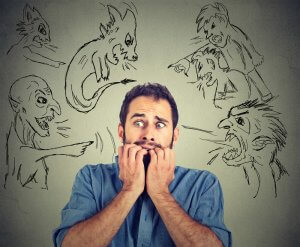
- Kleine-Levin syndrome is a rare disease which affects teenagers up to 16 y.o., it belongs to recurrent type of hypersomnia. Among manifestation signs are cognitive deterioration, amelia, depersonalization disorder. Boys are more imperilment to be affected than girls. Overwhelming majority of patients are hyper sexual (boys) or depressive (girls). 30% of sick people are inadequate, have pseudesthesia. Hypersomnia happens sporadically. The first episode is forced by an infection which recurrent during a year for a median of 14 years. Between episodic manifestation patients live normal for a healthy person life. For therapy of these severe cases stimulants and mood stabilizers are highly recommended.
- Guillain-Barré syndrome (GBS) is a disease in which the human immune system attacks nervous system, leading to inability to coordinate muscle activity and paralysis. Pricking sensations in the legs and weariness are the first presentations. Fatigue feeling may spread through all the body until a patient is completely paralyzed. The illness is life treating, hospital admission is necessary. The disease may affect 1 of 100.000 people. Patients see hallucinations, paranoid delusions, vivid dreams, illusions. No one knows how the attacking process happen as well as what forces it.
What Is Pathological Sleepiness?
The medical term of pathological sleepiness defines it as excessive sleep caused by neurologic disorders. The pathologies of sleep can be subdivided into six main groups:
- insomnia;
- breathing disorders;
- central origin hypersomnia;
- biological time disorder;
- parasomnias;
- moving disorder.
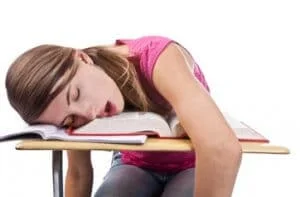
Can Smart Medications Cure Hypersomnia?
A precise diagnosis, individual screening of therapy and regular follow-up to monitor response to treatment are the keys to successful cure of hypersomnia. Modafinil and its interpretations Provigil, Modalert; Armodafinil (Nuvigil) are effective drugs for hypersomnia therapy. This state might be very debilitating. Work, social life are often compromised, so be sure to encourage a patient. On our site ModafinilXL you can find smart drugs at cheap price.

 Order Free Artvigil 150 mg Armodafinil 10 Samples Online
Order Free Artvigil 150 mg Armodafinil 10 Samples Online Generic Modalert 200mg Modafinil 10 Samples Pack
Generic Modalert 200mg Modafinil 10 Samples Pack